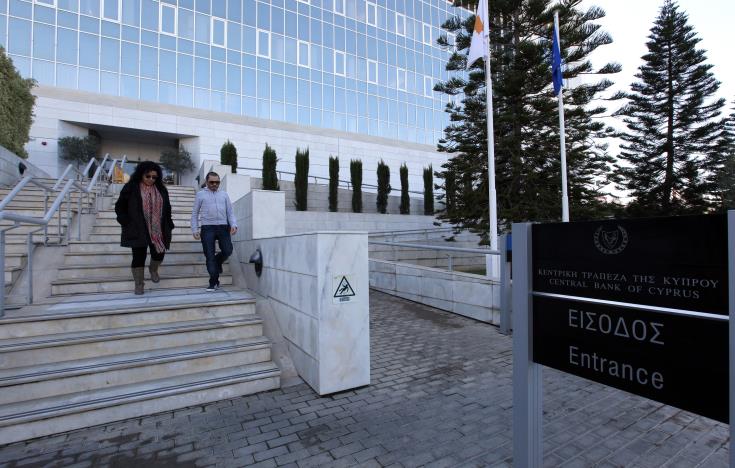Central banks in the advanced world are mandated to keep inflation low, typically with a target of 2%.
The main tool for achieving this is central bank monetary policy, which involves raising or lowering interest rates and adjusting their balance sheets accordingly.
Interest rates are a key variable in the economy, impacting aggregate demand, the housing market and hence economic activity, employment, and unemployment.
The slowdown in economic activity and sometimes outright recession that can result from tighter monetary conditions and higher interest rates can potentially lead to financial distress. We are at such a moment today.
Central banks are fighting inflation aggressively, with limited success, while interest rates have been rising relatively steeply for a year.
The expectation is that central banks will continue to raise interest rates this year and keep them high for longer until the conditions for sustained low inflation are in place.
Inflation declining
Harmonised inflation in the euro area peaked in the last quarter of last year, reaching 10.6% in October, and has been slowly declining since then.
It was 8.4% for the year and 8.6% in January 2023.
The impact of energy costs has fallen sharply in the last three months, while food costs have remained relatively high.
The contribution of non-energy and non-food items to inflation was higher than in previous months, reflecting second-round effects.
The same pattern is observed in Cyprus, where inflation fell more sharply than in the euro area, to 6.8% in January, mainly due to a lower impact on food prices.
Harmonised inflation in the euro area is expected to fall to an annual average of 5.6% in 2023 and 4% in Cyprus, according to the European Commission’s winter forecasts.
Monetary tightening
Inflation has started to fall, driven by lower energy prices, but remains elevated and persistent as non-energy influences remain large and pervasive.
The tightening of monetary policy, which has a 12-24 month time lag, has only just begun to bite, and the question is how much further interest rates will have to go and what their impact on the real economy will be.
The relationship between inflation, monetary policy or interest rates and economic activity or unemployment is depicted in the Phillips curve.
This curve was originally constructed as a statistical exercise, linking the unemployment rate, and hence economic activity, to inflation.
It postulates that unemployment and inflation move in opposite directions.
As unemployment rises, inflation falls and vice versa.
There is a trade-off in that it takes a higher unemployment rate and a slowdown in economic activity to reduce inflation.
How much unemployment needs to rise to bring inflation down to target depends on the nature of inflation, the responsiveness of the economy to monetary policy and the level of target inflation itself.
The more demand-driven inflation is, the more responsive inflation will be to monetary tightening.
Conversely, the more supply-driven inflation is, the less responsive it will be to monetary tightening.
In the latter case, the trade-off will be large; thus, a larger tightening will be needed to reduce the inflation rate.
The unemployment rate will rise more, and economic activity will slow down more as a result, hence the talk of a hard landing.
Inflation was initially supply-driven, resulting from shortages associated with the covid pandemic, supply chain problems and shortages caused by the war in Ukraine.
Labour shortages became more pronounced post-Covid as people dropped out of the labour force.
Tight labour markets, in turn, supported wage adjustments, which contributed to inflation.
Inflation targeting
What the markets now seem to be expecting is that inflation will fall towards 6% this year and then towards 3-4% next year.
What happens if inflation stays in this 3-4% range over the longer term?
If the underlying fundamentals point to higher inflation and a lower inflation target of 2% is pursued.
Then, central banks will be forced to tighten considerably more, increasing the chances of a deeper recession and a longer period of low economic activity.
Alternatively, central banks may accept a higher inflation target, say 3% or even slightly higher.
This is the view of Olivier Blanchard, a French economist and former chief economist at the IMF.
Higher interest rates
Banking systems in all euro area countries are transitioning to a new monetary landscape of tighter liquidity conditions and higher interest rates for longer than originally expected.
This will affect the payment obligations of borrowers, governments, companies and households alike.
In the case of governments, interest rates on debt are fixed at the time of issue and remain fixed until maturity.
Government borrowing costs will rise gradually as old debt matures and is refinanced at a higher cost.
However, unlike government debt, bank loans to firms and households carry variable interest rates that are frequently adjusted to market conditions and prevailing official interest rates.
An increase in the ECB’s policy rate of 3 or 3.5 percentage points will be fully reflected in higher interest rates on all loans, new and outstanding.
This is why many fear a new wave of non-performing loans and distress in the banking sector.
There are reasons why such fears are exaggerated in the case of the Cypriot banking sector.
First, total private debt in the economy has been reduced significantly over the past decade.
At the end of 2022, loans to residents, excluding the government, stood at 80% of GDP, compared to 270% of GDP in 2012, and the cost of borrowing has been lower.
This means that the interest cost of corporate turnover is much lower than in previous years and, therefore, more affordable.
A second reason concerns the difference between real and nominal interest rates.
What matters is the real interest rate, which is the nominal interest rate minus inflation.
As inflation rises, companies’ incomes and sales revenues increase, which improves their position.
Despite the significant rise in nominal interest rates, real interest rates are still low.
Loans to households are also much lower than they were ten years ago.
At the end of 2022, loans to households amounted to 40% of GDP, and most of these were housing loans, which typically have lower borrowing costs.
At the end of 2012, household loans were three times higher at 120% of GDP, when interest rates were higher than today.
On the supply side, the underlying resilience of the banking system has steadily improved in recent years, and the starting position today is very different from a decade ago.
Banks have restructured their operations, shrunk their balance sheets and strengthened their liquidity and capital positions.
Prudential supervision has been strengthened within the EU supervisory framework.
Non-performing loans have fallen sharply, and the coverage ratios, the provisions banks set aside to cover the risk of non-performing loans, are relatively high.
Conclusion
Inflation is proving to be more persistent than initially thought, and interest rates will rise further this year.
While a soft landing is not certain, it is now a built-in expectation.
But even if we get a hard landing instead, it will not be a 1970s-80s style hard landing.
Interest rates will not have to rise significantly from current levels, and many economies, including Cyprus, are more resilient to interest rate rises than in previous periods.
Ioannis Tirkides is Economic Research Manager at Bank of Cyprus. Views expressed are personal










